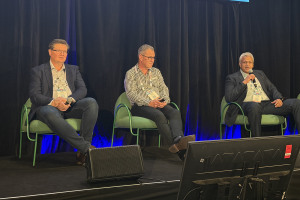Despite established links between R&D, productivity, and economic growth, Australia’s investment in large business R&D has fallen 24 per cent to $2.9 billion – half that of peer countries, a report commissioned by the Business Council of Australia (BCA), Atlassian and Cochlear has found.
Mandala Partners completed the report, Unlocking Australia’s R&D Potential, and found improved R&D policies could unlock upwards of $7 billion in annual gross domestic product and increase productivity growth by 0.1 per cent each year.
BCA chief executive, Bran Black, said reversing the downward trend in R&D investment and giving businesses the right environment to invest is critical for an economy-wide increase in innovation and productivity.
“This report sets out clear recommendations to create a better environment for private businesses to invest in and make significant contributions to our economy – and if we don’t act now then we will keep losing innovators, capital and ideas to other nations.
“Better tax, collaboration and commercialisation policies will give businesses the confidence to take the next step and create new Australian technologies that benefit everyone’s lives,” Black said.
According to the report, only five per cent of businesses account for 48 per cent of the country’s business R&D expenditure through the Research and Development Tax Incentive (R&DTI).
The OECD average for large company contributions to R&D expenditure is 61 per cent. Australia’s is 45 per cent.
“Australia underperforms on every dimension that drives business R&D decisions. Large businesses invest in R&D when the economics make sense; balancing costs, productivity (driven by factors including talent availability, institutions, and networks), and potential returns.
“While Australia has the institutional and talent foundations for strong R&D performance, it falls short when compared to international peers on costs and potential returns. Costs are relatively high, with R&D expenses 12 per cent above the OECD average. Government support remains uncompetitive, with large business tax incentives 30 per cent lower than in comparator countries,” the report said.
The report outlines six reforms that could unlock $7.72 billion in annual economic output, with an expected cost of $1.41 billion per annum over 10 years. During that time, the policies would generate $5 of value for every $1 of government expenditure, the report said. The net fiscal impact would be neutral when additional tax revenue was factored in. The six reforms are:
- Simplify R&DTI rates to a consistent offset of 18.5% above the company tax rate;
- remove the $150 million R&DTI cap;
- introduce an R&DTI collaboration premium for partnerships between businesses and higher education or government research institutions;
- introduce an R&D commercialisation incentive, providing a concessional tax rate of 10% for the Australian commercialisation of Australian-developed IP;
- streamline R&DTI compliance requirements to reduce the administrative burden on businesses;
- consolidate R&D grants into fewer, nationally significant programmes;
The BCA said, “Large companies do not just conduct research; they generate knowledge spillovers that build innovation capacity across the entire economy. Former employees from major R&D-performing businesses have gone on to lead 1800 other companies, collectively generating $77 billion in value added and employing 132,000 R&D workers in Australia.
“As large businesses pull back from R&D investment, Australia loses these multiplier effects that drive economy-wide growth, innovation, and productivity.”
Black told Sky News AM Agenda the report presented the strategies for keeping investment in Australia that then deliver an economic dividend across the economy.
“There are two key reasons. The first thing is that you get wonderful inventions and discoveries as a consequence of this type of investment. In Australia, we’ve produced Wi-Fi, we’ve produced Google Maps, we’ve got some fantastic inventors, discoverers, doing extraordinary work as things stand now, Michelle Simmons, for example, with her quantum technology work at the University of New South Wales.
“But that secondary point that I mentioned is that there is that whole of economy dividend. One of the things that I like to think of is that the work that the United Kingdom does through the catapult system, and what they’ve done there is invest in bringing universities and business together, collaborating under one roof, having shared arrangements with respect to IP and they turned local economies around. Sheffield, which was devastated by the decline of coal and steel, is now with more jobs in high tech industries than they were at the height of coal and steel in the 1960s. That’s what we could do here,” he said.
The research was commissioned for a submission to the federal government's Strategic Examination of Research and Development.






